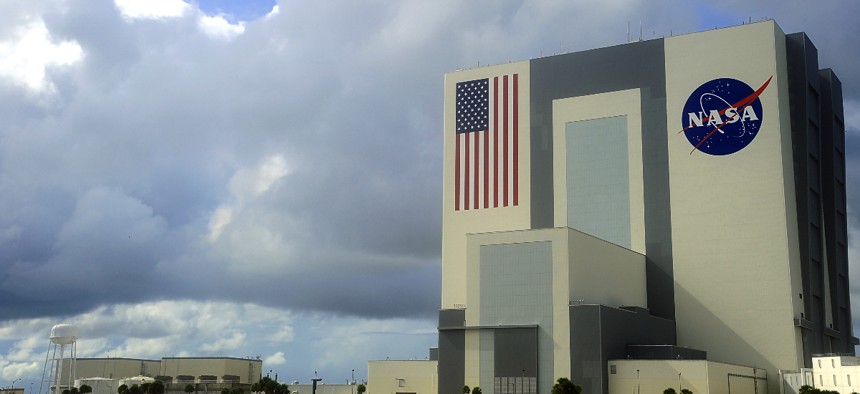NASA Unveils $27B Budget Plan to Support Mars Missions and Beyond

KAREN BLEIER/AFP via Getty Images
The requested budget is a 7.1% increase from NASA’s fiscal year 2023 enacted budget.
NASA is looking for more than $27 billion in fiscal year 2024 to support its missions, according to next year’s budget request.
The agency’s detailed request comes after the Biden administration released fiscal year 2024 top-level information on Thursday. The agency notes that the funding will help NASA strengthen its leadership position and continue to support the International Space Station and the Artemis missions, develop advanced technologies and make new discoveries, while helping to strengthen its workforce.
NASA’s $27.2 billion requested budget is a 7.1% increase from the agency’s 2023 enacted appropriation of $25.3 billion. It will help fund 148 missions.
“This budget request increases funding across all of NASA’s mission directorate and promotes U.S. leadership in exploration, science and technology innovation in aviation and space,” NASA’s Associate Administrator Bob Cabana told reporters during a press call on Monday. “Furthermore, this budget reflects the administration’s confidence in the agency and support for NASA's mission to explore the unknown in air and space, innovate for the benefit of humanity and inspire the world through discovery.”
Artemis and space exploration
The budget emphasizes the importance of the Artemis missions and further space exploration—something NASA officials deemed “crucial” during the media call.
It supports $8.1 billion for Artemis, furthering the agency’s efforts to go to the moon and Mars. According to the budget, Artemis II will occur in 2024, Artemis III in 2025 and Artemis IV in 2028.
A requested $7.9 billion will help NASA develop systems and capabilities for human exploration on the moon and Mars.
Specifically, the budget allocates more than $4.5 billion for common space exploration in support of Artemis. It includes $2.5 billion for space launch system focusing on Artemis II, III and IV, as well as $1.2 billion for the Orion program to finish assembling and testing the Artemis II crewed vehicle and $794 million for exploration ground systems, like the Mobile Launcher 2 for Artemis IV.
The budget includes $3.2 billion for Artemis Campaign Development—made up of $1.9 billion for the human landing system, $914 million for Gateway—a planned orbiting outpost around the moon to help support future Artemis missions—$60 million for advanced cislunar and surface capabilities and $380 million for xEVA and surface mobility programs to help explore the surface of the moon.
Another $49 million would support human exploration of the moon and beyond, and $161.8 million would be designated for Mars campaign development to prepare for astronauts’ eventual exploration of the planet, by developing and testing prototype technology, among other things. That Mars campaign development consists of $132 million for habitat systems, $18 million for crew health and performance—like remote medical care and exercise equipment—$6 million for exploration capabilities core technology and $4 million for robotic precursors to continue to develop small robotic spacecraft and remote sensing instruments.
Space operations
The budget would allocate a total of more than $4.5 billion for existing and future space operations, with $1.3 billion going to the International Space Station. Moreover, nearly $2 billion is allotted for space transportation, including nearly $1.9 billion for crew and cargo programs to the ISS and $101 million for the commercial crew program that collaborates with industry to provide vehicle transport for astronauts. More than $1 billion would go to space and flight support, such as communication and navigation, human research programs, launch services, space flight operations and rocket propulsion tests.
Furthermore, $228 million would go towards commercial low earth orbit development to help facilitate “safe, reliable and cost effective” privately-owned and operated LEO destinations. NASA intends to purchase services from these destinations as the agency works to maintain a presence in LEO after the planned retirement of the ISS in 2030.
Advanced technology
Approximately $1.39 billion of the requested budget would be dedicated to developing advanced technology for space. This includes $551 million for demonstrations to test new technology, such as solar electric propulsion and OSAM-1—a robotic spacecraft with tools, technologies and techniques to extend the life of satellites—cryogenic fluid management and space nuclear propulsion, among other things.
The budget also includes $402 million for technology maturation like lunar deployable hopper—a small vehicle that can provide access to areas unreachable by rovers and other technologies—4G/wireless communications and autonomous operations. The requested funding would also provide $138 million for early-stage innovation and partnerships and $300 million for small business innovation research and development technology.
Science
The budget includes $8.2 billion to further scientific development that will help NASA implement its Earth System Observatory, help with the Landsat Next mission, advance greenhouse gas measurement, continue the Mars Sample Return mission and Near-Earth Object Surveyor mission, help operate the James Webb Telescope and develop the Nancy Grace Roman Space telescope, support the Explorer program, further space weather investigations, invest in orbital debris and space situational awareness and continue to study how bodies function in space.
Protecting Earth
The budget includes $570 million to reduce the climate impact of aviation and approximately $300 million for planetary defense, including against orbital debris.
Miscellaneous
The budget requests $157.8 million for STEM engagement efforts, including grants, money for the minority university research education program, funding for STEM education and programming, among other initiatives.
Another $3.37 billion would support safety, security and mission services, of which $2.26 billion would go to mission services and capabilities and the remaining $1.1 billion is for engineering, safety and operations. This also includes $682 million for NASA’s IT program to modernize capabilities and enhance cybersecurity risk management.
The budget also includes $50.2 million for the agency’s inspector general.
“The president’s budget for NASA is an investment in our nation's future,” NASA’s Chief Financial Officer Margaret Vo Schaus told reporters. “It is an investment in U.S. innovation and competitiveness and it is an investment in our next generation of workers.”






